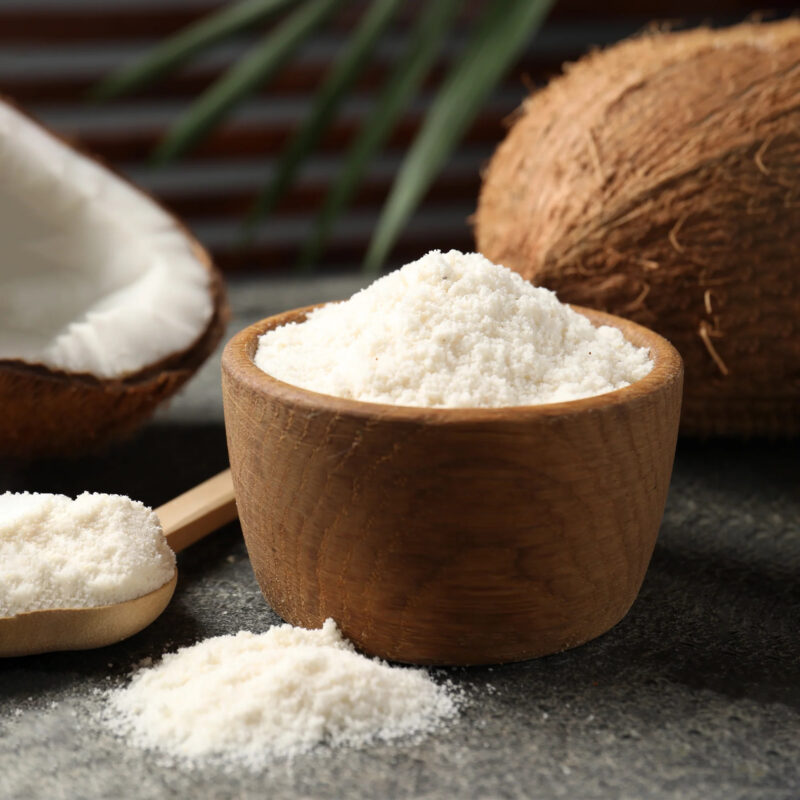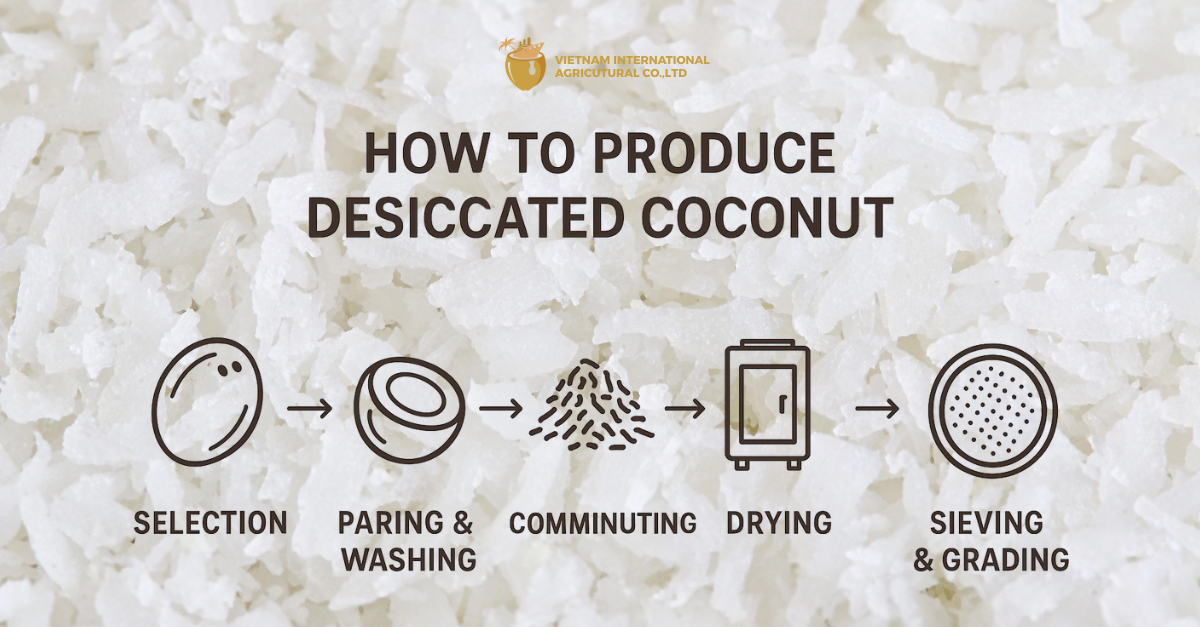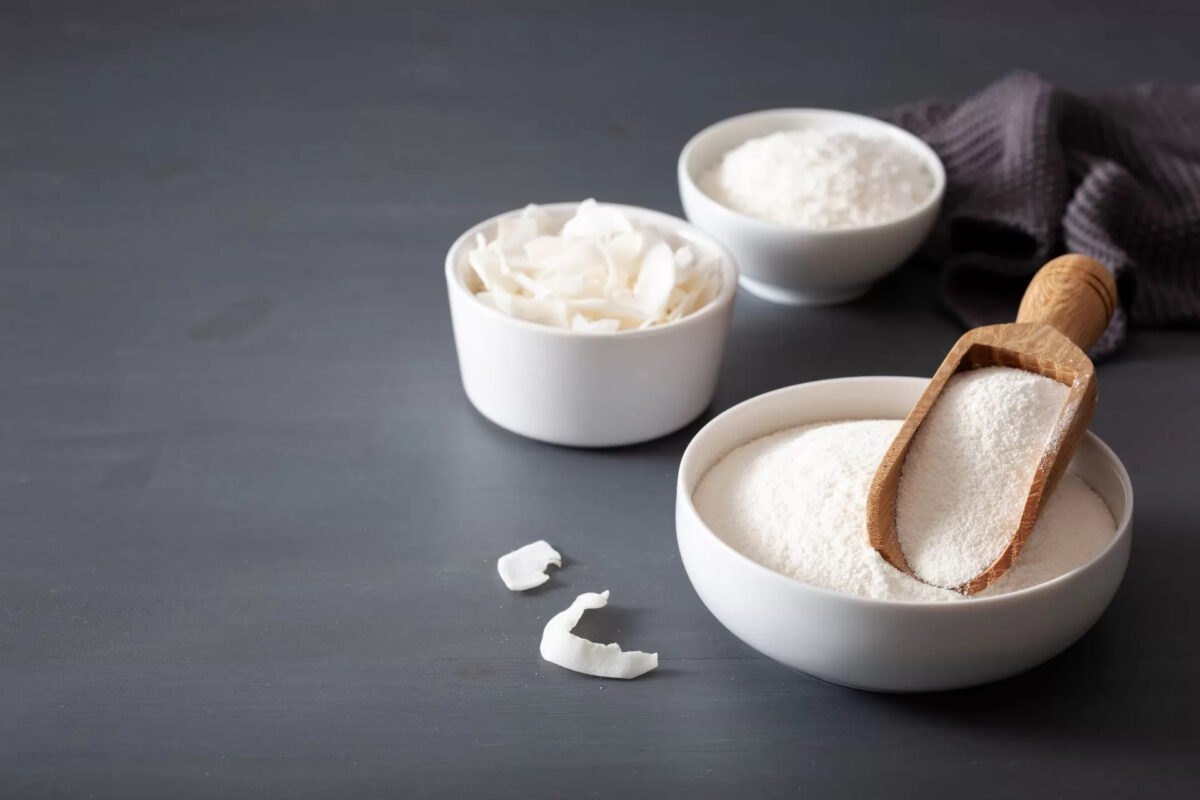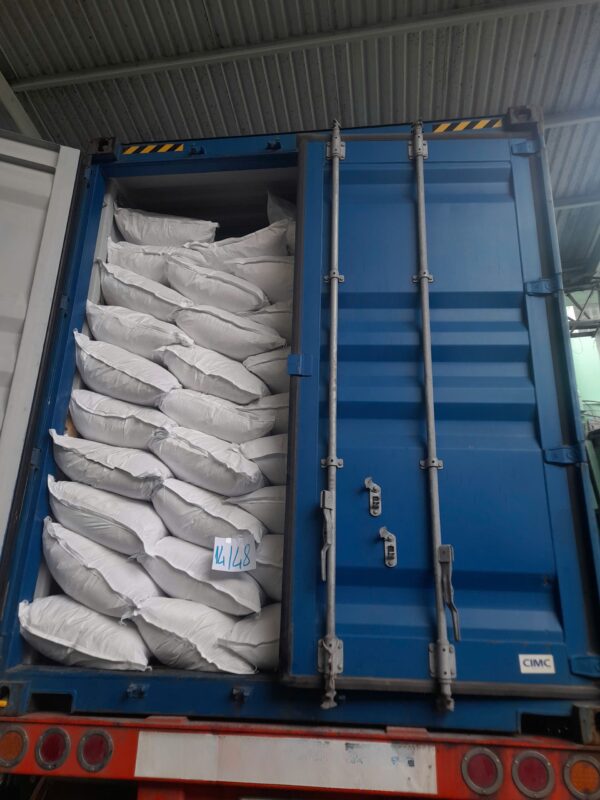Knowing how to make coconut powder helps manufacturers, food producers, and even home users understand how this versatile ingredient is created. Coconut powder is a shelf-stable, nutrient-rich product widely used in bakery, beverages, and instant food industries worldwide.
At VIA Co., Ltd (Vietnam International Agriculture), we specialize in producing high-quality coconut powder made from 100% natural coconuts grown in Bến Tre, Vietnam — the heart of the country’s coconut industry.
What Is Coconut Powder?
Coconut powder, sometimes called desiccated coconut powder, is made from the dried, ground meat of mature coconuts. It contains the natural sweetness and aroma of coconut and can be reconstituted with water or used directly in recipes.

It’s widely used in:
-
Bakery and confectionery products
-
Instant drinks and smoothies
-
Dairy alternatives and desserts
-
Energy bars and health foods
There are two main types based on fat content:
-
High-Fat Coconut Powder (60–65%) – Rich texture and full coconut flavor.
-
Low-Fat Coconut Powder (40–45%) – Light and mild, ideal for low-calorie or high-protein applications.
Types of Desiccated Coconut (Used to Make Coconut Powder)
| Type / Grade | Fat Content | Texture | Best For | Key Features |
|---|---|---|---|---|
| High-Fat Fine Grade | 60–65% | Smooth, fine flakes | Desserts, chocolates | Rich coconut taste, creamy feel |
| High-Fat Medium Grade | 60–65% | Slightly coarse | Biscuits, snacks | Adds texture and aroma |
| Low-Fat Fine Grade | 40–45% | Fine powder | Health foods, energy bars | Dry, light, long shelf life |
| Low-Fat Medium Grade | 40–45% | Coarser texture | Savory foods, toppings | Ideal for clean-label formulations |
These desiccated coconut grades are the foundation of how to make coconut powder, which is simply a finer, dehydrated form used in global food processing.
How to Make Coconut Powder – Step-by-Step Process
The process of how to make coconut powder requires precision and care to ensure purity and consistent export quality.

Step 1: Selecting Fresh Coconuts
Only mature coconuts with thick, white meat are selected from Bến Tre, Vietnam, known for producing coconuts with superior oil content and aroma.
Step 2: Dehusking and Paring
Coconuts are dehusked and pared to remove the brown skin, keeping only the clean white kernel.
Step 3: Washing and Grinding
The coconut meat is washed thoroughly using filtered water, then shredded or ground into fine flakes.
Step 4: Drying
The shredded coconut is dried using hot-air dryers until the moisture content drops below 3%, ensuring long shelf life and hygiene.
Step 5: Grinding into Powder
The dried flakes are milled into a fine, soft powder — the signature step of how to make coconut powder with smooth consistency.
Step 6: Sieving, Packing, and Exporting
The powder is sieved for uniform size, then vacuum-packed in moisture-proof, food-grade bags, ready for global shipment.
Quality Standards When Producing Coconut Powder
| Parameter | Standard | Purpose |
|---|---|---|
| Moisture | ≤ 3% | Ensures long shelf life |
| Fat Content | 40–65% | Defines richness and flavor |
| Whiteness | ≥ 90% | Reflects freshness |
| Microbial Safety | HACCP, ISO 22000 | Guarantees food safety |
| Packaging | Vacuum-sealed bags | Maintains quality during shipping |
To truly understand how to make coconut powder, it’s essential to meet these global food safety standards consistently.
Why Make Coconut Powder in Vietnam

Vietnam is one of the world’s fastest-growing suppliers of desiccated coconut and coconut powder, thanks to its unique advantages:
Ideal Coconut Source – Bến Tre Province
Bến Tre is the “land of coconuts” in Vietnam, producing coconuts rich in oil and aroma — perfect for high-quality coconut powder. Local farmers follow sustainable farming methods, ensuring steady, year-round supply.
Advanced Manufacturing Capabilities
Vietnamese processors, including VIA Co., Ltd, use modern machinery and hygienic systems, such as automatic drying and grinding, minimizing contamination risks and improving texture uniformity.
Competitive Cost Advantage
Vietnam offers lower production and logistics costs compared to other coconut origins like Sri Lanka or Indonesia, allowing buyers to import at attractive prices without compromising on quality.
Sustainability and Traceability
Coconut farming in Vietnam is shifting toward traceable and environmentally responsible sourcing. VIA works directly with local growers to promote eco-friendly practices and long-term supply stability.
Understanding how to make coconut powder in Vietnam means recognizing that the country’s blend of nature, technology, and sustainability makes it a top choice for importers worldwide.
Why Choose VIA Co., Ltd to Make Coconut Powder

Partnering with VIA Co., Ltd means working with a supplier who understands not just how to make coconut powder, but how to make it right — from the farm to your factory.
Reliable Quality Control
Each production stage is carefully monitored for fat content, color, and microbiology, ensuring consistency across every shipment.
Pure and Natural Ingredients
VIA’s coconut powder contains no preservatives, bleaching agents, or additives, preserving the authentic coconut flavor.
Certified and Safe Production
Our production facilities are certified under HACCP and ISO 22000, ensuring compliance with international food safety standards.
OEM and Private Label Services
VIA supports customized grades, packaging sizes, and private-label branding, giving partners flexibility for their target markets.
Strong Export Experience
With years of experience in global coconut exports, VIA provides full support — from documentation and sampling to shipping logistics — ensuring smooth import processes for buyers worldwide.
Sustainability Commitment
We believe that producing responsibly is key to long-term success. VIA works with local coconut farmers to minimize waste and promote sustainable sourcing.
VIA Desiccated Coconut Product Specifications
| Specification | High-Fat Grade | Low-Fat Grade |
|---|---|---|
| Fat Content | 60–65% | 40–45% |
| Moisture | ≤ 3% | ≤ 3% |
| Color | Natural White | Natural White |
| Flavor & Aroma | Sweet, rich coconut | Light, clean coconut |
| Particle Size | Fine / Medium / Flake | Fine / Medium |
| Packaging | 25kg PP bag (PE liner) | 25kg PP bag (PE liner) |
| Shelf Life | 12 months | 12 months |
| Certifications | HACCP, ISO 22000 | HACCP, ISO 22000 |
| Origin | Bến Tre, Vietnam | Bến Tre, Vietnam |
This specification table highlights the consistent quality and technical standards behind VIA’s coconut powder, ensuring reliability for international importers.
Conclusion
Learning how to make coconut powder goes beyond understanding the process — it’s about knowing the quality, origin, and expertise behind each step.
At VIA Co., Ltd, we combine Vietnam’s coconut heritage with modern production to create export-grade coconut powder trusted by global food manufacturers.
👉 Partner with VIA to source high-quality, customizable coconut powder — sustainably produced and globally certified.
- Email: admin@vietnam-coconut.com
- Tel / WhatsApp: (+84) 931 442 377
- LinkedIn: Vietnam Coconut


 Tiếng Việt
Tiếng Việt 中文 (中国)
中文 (中国)